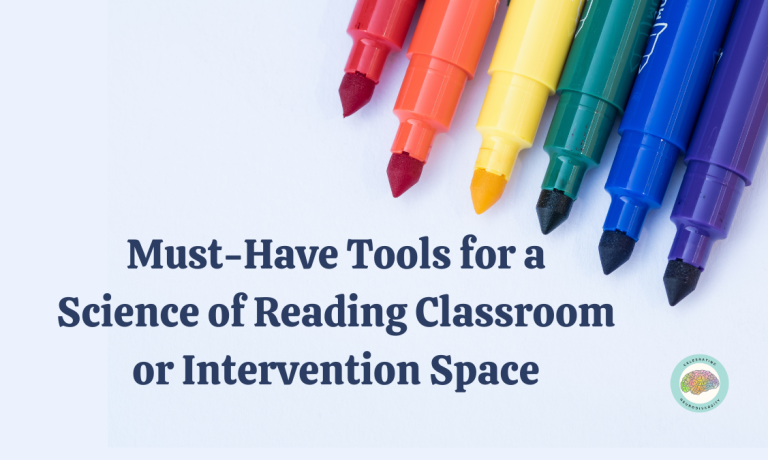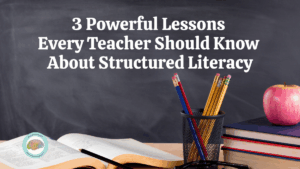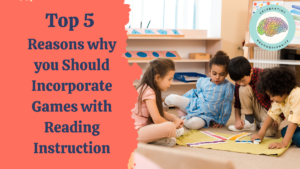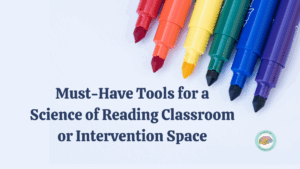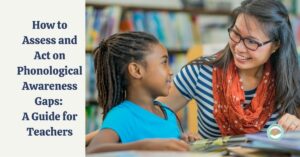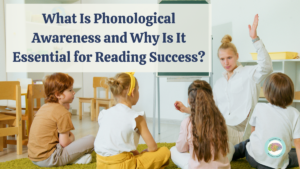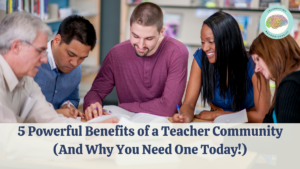Setting up your classroom or intervention space with the Science of Reading in mind doesn’t have to be complicated. You can create a space that supports structured literacy, small group instruction, and effective intervention with a few intentional tools. Whether you’re just getting started or looking to refresh your setup, this will help you focus on the materials that truly support student success.
Multisensory Lesson Materials for Science of Reading Success
Multisensory teaching isn’t just a trend, it’s one of the most effective pieces of structured literacy instruction. Multisensory strategies help students link sounds to letters using multiple pathways in the brain. That means learners don’t just hear a sound, they see it, say it, touch it, and move through it, making it more concreate.
When students engage in reading and spelling using more than one sense, they develop stronger neural connections. This leads to better memory, improved decoding, and stronger retention, which is needed even more with students with dyslexia or other learning differences.
These materials are simple, affordable, and easy to start using right away.
- Smelly Markers – Perfect for dictation or word mapping. The scent adds sensory input and kids love using them, especially when practicing red words or segmenting sounds.
• Big Markers
• Smaller Markers - Dry Erase Pocket Sleeves – Great for reusing word mapping mats and dictation sheets. Saves paper and makes prep easy. Shop here
- Paint Tray for Word Mapping – Use the tray with pom-poms, chips, or small manipulatives to isolate phonemes. The tactile, visual structure makes mapping sounds to words more engaging. Shop here
- Magnetic Tiles – Use magnetic tiles and a dry erase marker to write individual sounds or syllables. Then have students physically manipulate and blend them to form words. This is a hit with my students and is great for building orthographic knowledge. Shop here
- Magnetic Chips + Wand – Use chips to mark phonemes in a word as students say the sounds. The magnetic wand adds a fun and my students love clean-up! Shop here
- Writing Tablet for Kids – These reusable LCD writing tablet are perfect for quick word dictation or independent practice without the need for paper. Shop here
- Sand Tray or Tactile Tray – Let students trace letters and words in sand to reinforce motor memory and sound-symbol associations.
• Colored Sand – Add a pop of fun and visual interest to your tray.
• Tray- I like to use plastic food storage containers from the Dollar Tree to store the sand.
- Mini Mirrors – Mirrors help students observe their mouth placement while practicing sounds. They are especially helpful for teaching articulation, sound production, and phonological awareness skills. Shop here
- Cookie Sheets for Magnetic Tiles – These work perfectly as magnetic boards for letter tiles. Cookie sheets are inexpensive, portable, and student-friendly.
• Get cookie sheets from the Dollar Store
• Download free letter tiles from UFLI
Organizational Tools That Make Teaching Easier
One of the most underrated parts of effective reading instruction? Being able to find what you need, when you need it. When your materials are organized and accessible, your brain has more space to focus on teaching, not scrambling. Whether you’re working with small groups, leading intervention, or tutoring, a few well-thought-out systems can save you serious time and stress.
An organized space also supports student independence. When learners know where to find their word mapping mats, vowel charts, or decodable books, they can take more ownership of their learning.
Here are my favorite tools for keeping your Science of Reading materials tidy, accessible, and ready for action.
- Book Bins – These colorful, sturdy bins are great for organizing student notebooks, decodable books, or phonics folders by group. They are easy to label and perfect for instruction. Shop here
- Plastic Photo Boxes – I love these for storing phonics games! They can also be used for flashcards, red word decks, and other small manipulatives. They are stackable, compact, and help so much with organization. Shop here
- Folders for Student Work – Keep individual student lesson plans, progress monitoring sheets, and materials neatly filed and accessible. Shop here
- Rolling Cart for Small Group Tools – Create your own mobile literacy station! Use the drawers to organize blending boards, sound chips, whiteboards, and more, all in one convenient place. Shop here
- Student Notebook Binding Machine – Make professional-looking student notebooks that align with your UFLI routines. Ideal for binding and adding materials as needed. Shop here
Fidgets & Sensory Tools: Why They Matter for Learning
Some tools may seem small, but they can make a big impact, especially for our neurodiverse learners. Fidgets, movement supports, and sensory tools are often overlooked, yet they play a key role in helping students regulate their bodies and focus their minds. For kids with ADHD, dyslexia, or sensory processing differences, having access to simple tools like fidgets can create the calm, engaged state they need to learn effectively.
Why Fidgets Work:
- Support self-regulation during tasks that require sustained attention
- Provide a calming sensory input without disrupting instruction
- Help students stay grounded and engaged during decoding, dictation, or group work
- Promote independence by allowing students to self-monitor their needs
Favorite Fidgets for Structured Literacy Settings:
Here are some of my students and my favorites! These tools are quiet, low-distraction, and easy to implement in any classroom, small group or individual setting.
- Morf Fidget Worm – A quiet, bendy fidget that’s perfect for keeping hands busy during lessons. It twists and turns smoothly, making it ideal for students who need constant but low-key movement. Shop here
- Push Pop Bubble Fidget – This reusable popper mimics bubble wrap and gives satisfying sensory feedback. I love to use these for word mapping as well! Shop here
- Pop It Stress Ball – The best of both worlds. It’s soft like a stress ball, with built-in pop bubbles for fidgeting fun. Perfect for kids who like to squeeze and pop. Shop here
- Nice Cube – The Nice Cube is a favorite! It is squishy with a unique texture, soft when slowly squeezed, but firm with a quick squish. My students love stretching, squishing, and watching it return to its perfect cube shape every time. Shop here
- Schylling NeeDoh Original – A classic squishy fidget that feels amazing in the hand. It’s super soothing, durable, and easy to clean. Shop here
- Schylling NeeDoh Shaggy – This one is squishy like the original, but with a soft, fuzzy texture on the outside for even more sensory input. Great for students who crave extra tactile stimulation. Shop here
- Wacky Tracks Fidget Toys – You can click, bend, and shape these satisfying snap-together pieces into different forms. They are fun, quiet, and creative. Shop here
Build a “Fidget Basket”: I use a fidget basket in my tutoring space. If you create your own, remember to model expectations and you’ll likely find that your students stay more regulated with sessions that are more productive.
Movement Tools for Focus and Regulation
While small fidgets can help many students stay calm and engaged, some learners benefit most from big-body movement to regulate their energy and attention.
- Kids Stay-N-Play Balance Ball – This kid-sized stability ball is a fantastic seating option for learners. It allows gentle bouncing and movement while keeping kids safely seated with built-in stabilizing legs. I have used these with my tutoring students for years! Shop here
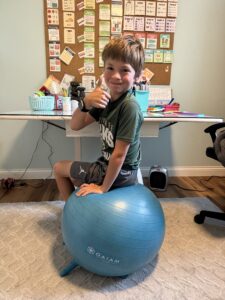
- Mini Trampoline – A mini indoor trampoline is a game-changer for kids who need to release energy in short bursts. Just a few minutes of bouncing can help reset focus and regulate behavior before learning activities. I often have students jump while doing phonological awareness activities and the visual drill. Shop here
Wrapping It Up
There’s no one “perfect” setup for a Science of Reading classroom or intervention space but having the right tools can make your instruction more effective, your planning easier, and your students more engaged. Whether you’re just starting out or refreshing your routines, I hope this list helps you build a space that works for you.
Start simple, stay consistent, and know that every small tool can support big growth for your readers.
Download The 4 Essentials to Reading Success, a free guide that walks you through the key components every teacher needs to support struggling readers with confidence.
👉 Click here to grab your free guide.
* This post contains affiliate links, which means I may receive a small commission. This is at no extra cost to you. I only share products I truly love and use in my own teaching practice.

